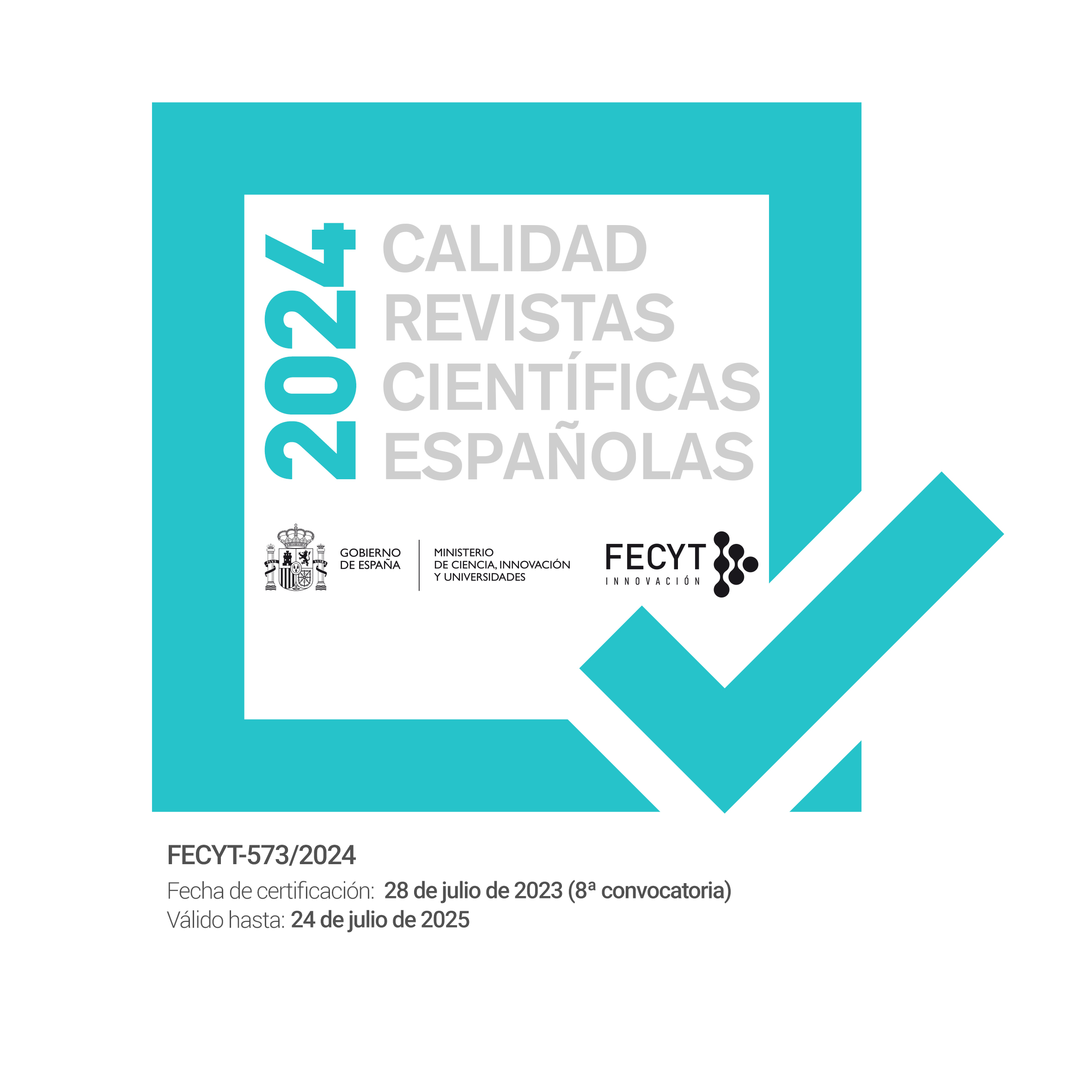Astrágalo admitida en la FECYT
resultados de la evaluación obtenida en la 8ª edición de la evaluación de la calidad editorial y científica de las revistas científicas españolas.
DATOS DE REVISTA
REFERENCIA: FCT-22-1361
TÍTULO: Astrágalo. Cultura de la Arquitectura y la Ciudad
RESULTADOS DE LA EVALUACIÓN
Le comunicamos que el resultado de la evaluación, en resolución provisional, de la 8ª edición del proceso de evaluación de la calidad editorial y científica de las revistas científicas españolas que la Fundación Española para la Ciencia y la Tecnología (FECYT) ha llevado a cabo durante 2023, ha sido CONCEDIDA en las áreas de Ingenierías y Arquitectura y Arqueología, Antropología y Etnografía.
Se adjuntan las fichas de evaluación con la valoración de cada uno de los indicadores cuantitativos así como la puntuación obtenida en el indicador de visibilidad e impacto.
Valoración cualitativa obtenida:
1.Estructura de la revista y orientación científica.
Nota: 7
Observaciones:
La revista, que ha evolucionado en los últimos 25 años, tiene como objetivo analizar el pensamiento de experimentación y crítica del estado actual de la construcción de las ciudades y del oficio de la arquitectura. El propósito actual que recoge la publicación es “difundir el trabajo de intelectuales (académicos y profesionales, noveles o consolidados) de todo el mundo capaces de ofrecer aportaciones transdisciplinares que propongan un análisis crítico de la Arquitectura en su inserción en las culturas urbanas”. La estructura y secciones de la revista son coherentes con su enfoque y alcance. La periodicidad de la revista es anual, desde 2021 cada número está titulado a modo de monografía y el número de contribuciones es adecuada, aunque para una revista con orientación científica se recomendaría aumentaran el número de publicaciones anualmente. La maquetación y diseño es congruente con el estilo de la revista. Las imágenes que edita son de una resolución adecuada, pero se podría mejorar la calidad de los gráficos. También se podrían incluir palabras clave al inicio del artículo. Se aceptan y publican aportaciones en inglés, portugués y español.
2.Estructura de los artículos que publica la revista y su orientación científica.
Nota: 7
Observaciones:
Sigue un modelo de redacción acorde al propósito de la publicación. No obstante, y debido a su objetivo, algunos artículos carecen de referencias, otros artículos incluyen un breve CV del autor (pero no todos). Podrían unificarse los criterios de la estructura. En muchos casos los artículos están más próximos a la divulgación que a la investigación. El rigor académico es propio del área de conocimiento. Hay artículos correspondientes a disciplinas alejadas a las de la arquitectura que, en principio constituye una ventaja para aumentar el alcance de la revista y que podrían aportar valor a la publicación. Pero también sería recomendable fomentar la participación de autores de otras disciplinas con competencias en materia de urbanismo, como pueden ser los Ingenieros de caminos, canales y puertos para fomentar la participación en un contexto multidisciplinar.
3.Metodología de los artículos de la revista.
Nota: 5
Observaciones:
Los artículos se explican de forma rigurosa, aunque se recomienda la inclusión de técnicas y métodos de análisis que mejoren la orientación científica de la revista.
4.Relevancia de la contribución de la revista a su área de conocimiento.
Nota: 7
Observaciones:
La originalidad de los artículos publicados podría aumentar si aumentara el número de artículos en la revista y, a su vez, podría mejorar si aumentara su periodicidad, dado que en un año las oportunidades pueden ser muchas y de distinta índole. A modo de ejemplo, la incursión de la inteligencia artificial en el desarrollo futuro de las ciudades bien merece un artículo de reflexión entre la creatividad humana (originalidad de una creación arquitectónica libre) frente al desarrollo de algoritmos que se basan en lo conocido/aprendido. También se recomienda la inclusión de un apartado de líneas futuras de investigación que favorezcan trabajos futuros. Asimismo, la participación del sector privado en la publicación podría suponer una oportunidad en el desarrollo de nuevas líneas de investigación y una mejora en la transferencia del conocimiento UNIVERSIDAD-EMPRESA.
5.Especialización del Consejo o Comité (de Redacción, Asesor, Científico…) de la revista en el que resida la potestad de decidir sobre los contenidos a publicar.
Nota: 8
Observaciones:
El equipo editorial está compuesto por la Dirección, Editores y Comisión científica, Comisión ética y una diseñadora gráfica con miembros mayoritariamente del mundo académico nacional e internacional. La mayoría de los miembros son del sector académico y está asociado a un vínculo donde se puede comprobar su especialización. Todos cuentan con experiencia en el ámbito científico de la revista. Se recomienda ampliar la participación de la empresa privada y de otros perfiles relacionados con el ámbito de la revista.
La nota obtenida en la evaluación cualitativa es de: 6,8 de 10













